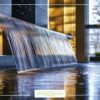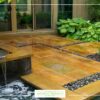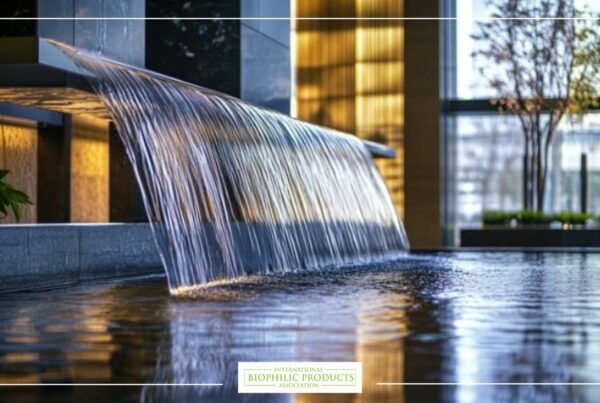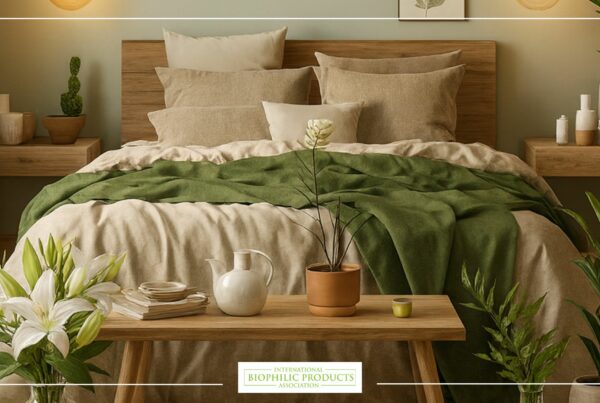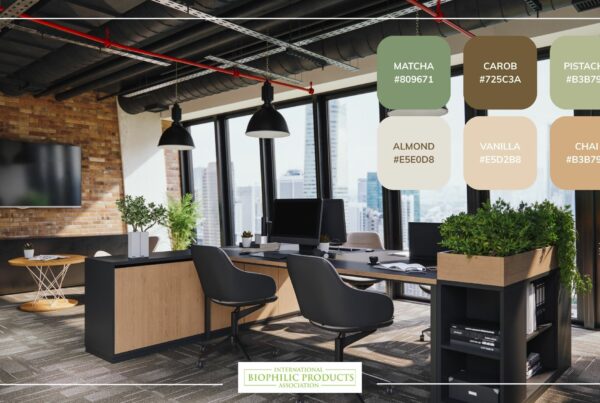For generations, architects have looked to water as both a practical resource and an inspiration. Today, the fusion of water and architecture, often called aquatecture, is a hallmark of biophilic design. From shimmering water walls and fountains to indoor rills and aquariums, water features bring movement, sound and light into our built environments. Few major projects are completed without some element of water; whether public plazas or private residences, designers recognise that water enriches our sensory experience and connects us to nature. In urban centres, civic installations such as Paris’s Place de la République and London’s Granary Square showcase how water can animate public spaces and invite interaction. Meanwhile, advances in technology and materials are making it easier to integrate water into homes and workplaces.
Understanding aquatecture in biophilic design
Biophilic design stems from the recognition that humans have an innate connection to nature. Water plays a central role in this connection, offering visual, auditory and tactile experiences that soothe and inspire. Within biophilic design frameworks, the presence of water pattern describes the conditions that enhance a space through seeing, hearing or touching water. Fluidity, sound and accessibility influence whether a feature feels calming or energising. Practical examples include fountains, cascades and aquariums. Even color and imagery can evoke water’s essence, but real water engages multiple senses and offers greater benefits.
Aquatecture incorporates these principles on a larger scale. By designing with water as an architectural element, buildings and landscapes become dynamic systems that respond to light, weather and human interaction. Water features can soften hard surfaces, reflect surrounding architecture and create microclimates that improve comfort. They also produce water sounds that mask urban noise and promote relaxation. In this way, aquatecture aligns with biophilic design’s goals of enhancing wellbeing and fostering a sense of place.
Water in civic spaces: scrims, jets and fountains
Urban planners have long used water to revitalise public squares and plazas. Paris’s Place de la République features a shallow “water scrim” that floods a wide paved area with glistening water. Children and adults wade through the mirror-like surface, cooling off on hot days and experiencing a playful connection to the city. The scrim transforms a static square into an ever-changing pool, reflecting clouds and monuments while producing gentle water sound effects that soften the urban soundscape.
Similarly, Granary Square in London’s Kings Cross district boasts more than 1,000 individually controlled jets embedded in the paving. These fountains dance throughout the day, shifting from calm and reflective in the morning to lively and animated as crowds grow. Passersby can interact with the jets, and the choreographed rhythms of water create a communal experience. Such installations illustrate how aquatecture turns civic spaces into interactive environments, encouraging people to gather, play and relax.
Features with water: bringing the outdoors in
For architects and clients seeking to blur the boundaries between indoors and outdoors, aquatecture offers creative possibilities. Interior rills, shallow channels that meander across floors, introduce gentle gurgling sounds and guide movement through a space. Full-height water walls cascade down textured surfaces, producing shimmering reflections and a soothing acoustic backdrop. Indoor fountains serve as sculptural focal points that provide humidity and ambient sound. Cascading waterfalls in atria invite people to pause and admire the interplay of light and water. Even aquariums, when integrated into walls or partitions, bring underwater ecosystems into daily life.
These indoor water features are becoming more adventurous as designers embrace biophilic principles. By aligning sightlines to exterior ponds or pools, architects create visual continuity between inside and outside. Glass walls, sliding doors and courtyards allow water features to span thresholds, making the flow of water part of the building’s experience. As technology improves, pumps and filtration systems operate quietly and efficiently, reducing maintenance concerns.
Domestic aquatecture: scale and style
While many grand water features are designed for commercial or public spaces, homeowners can still enjoy the benefits of water in smaller, elegant forms. Modern indoor fountains have shed the kitsch reputation of decades past. Today’s designs range from minimalist stone basins to sleek glass columns, suiting contemporary and classical interiors alike. Placing a fountain near a seating area introduces a gentle sound that calms the mind and masks background noise.
For homes with access to gardens or courtyards, positioning an outdoor water feature near a window or patio door can create a seamless connection between indoor and outdoor spaces. The sight and sound of a pond, bubbling urn or small waterfall become part of the interior experience when framed by glazing. Bathrooms offer another opportunity to embrace water; rainwater shower heads and waterfall fixtures deliver immersive experiences, while freestanding tubs near windows capture light reflections on the water’s surface.
Capturing and managing rainfall
Looking ahead, designers are exploring ways for buildings to harness rainfall as an aesthetic and functional resource. Roof scuppers channel rain into cascades or wall-mounted waterfalls, transforming downpours into visual spectacles. Rain chains guide water from gutters to ground level, creating mesmerising droplets that glisten and tinkle as they fall. These systems not only manage stormwater sustainably but also provide ever-changing features with water that connect occupants to weather cycles. Other innovations aim to recreate “caustics,” the dancing light patterns seen at the bottom of swimming pools or through raindrops on glass. By directing sunlight through moving water, designers can cast shimmering reflections onto interior surfaces, adding dynamism and a sense of nature indoors.
Imitating water through materials and motifs
Not every space can accommodate flowing water, but designers can evoke water through color, pattern and reflection. Mirrors, handmade glass and glazed ceramics create water-like reflections that ripple with changing light. Wallpaper, textiles and art featuring aquatic motifs, such as sea foam, curling waves, ripples or crystalline droplets, bring the essence of water into a room. New York-based wallpaper company Trove released a collection called Ode to Eau that captures the grey, cascading beauty of waterfalls and sea currents. These elements, while indirect, still contribute to a biophilic atmosphere by invoking memories of water and its many forms.
Benefits of indoor water features
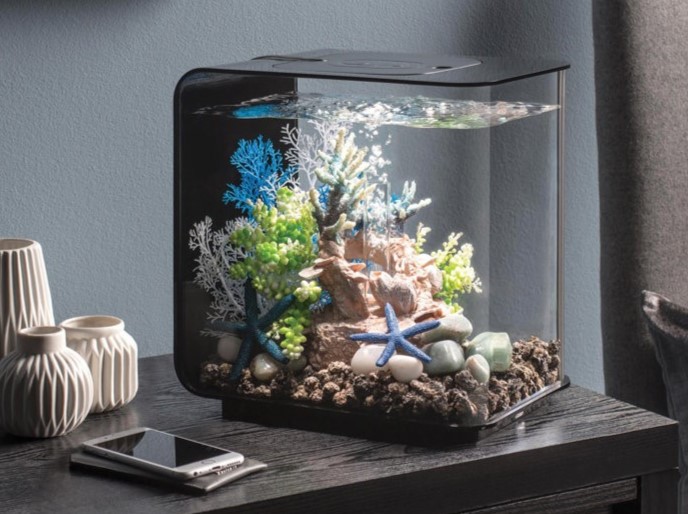
Integrating water into interior design offers numerous advantages for wellbeing. Natural relaxing water sounds reduce stress by lowering heart rate and cortisol levels; they mask disruptive noises and promote focus. Because water sounds are non-linguistic, they do not interfere with cognitive processing, allowing the mind to enter a meditative state. The dynamic yet gentle qualities of water evoke awe and mindfulness, enhancing mood and fostering a sense of presence.
Water features also improve indoor air quality by adding humidity, which can alleviate dryness caused by heating and air conditioning. In commercial settings, water walls and fountains serve as acoustic buffers, reducing the impact of conversations and footsteps. The visual movement of water draws attention and provides a focal point that anchors a room. In workplaces, these qualities can boost creativity and productivity by offering restorative micro-breaks.
Design considerations: maintenance and safety
While aquatecture offers many benefits, practical considerations must be addressed. Pumps and filtration systems require regular maintenance to keep water clean and moving; neglected features can develop algae or odors. Designers should plan for easy access to equipment and include safe electrical setups. Acoustic calibration is essential; water should be audible enough to soothe without becoming disruptive. Adjusting flow rates and placement can tailor sound levels to different contexts.
Safety is another concern, particularly in homes with children or pets and in public spaces. Shallow basins, slip-resistant surfaces and subtle barriers help prevent accidents. In regions prone to drought, water features should use recirculating systems or harvested rainwater to minimise consumption. Integrating solar-powered pumps and energy-efficient lighting aligns water features with sustainability goals.
Combining water with other biophilic elements
For maximum impact, water features should complement a palette of biophilic elements. Natural light, greenery and organic materials enhance the sensory richness of water. A living wall paired with a trickling fountain engages sight, sound and smell. Fractal patterns in art or architecture mirror the complexity of nature, while scents from nearby plants deepen the immersive experience. Together, these elements create environments that resonate with our evolutionary instincts and promote holistic wellbeing.
Aquatic architecture and sustainability
Aquatecture dovetails with sustainability by incorporating ecological functions. Bioretention ponds and constructed wetlands filter stormwater, support biodiversity and provide habitats for birds and insects. Permeable pavements and rain gardens reduce runoff, while green roofs with ponds add thermal insulation and increase urban green space. These systems not only bring water into the design but also contribute to resilient infrastructure.
Using locally sourced stone, reclaimed wood and other natural materials ensures that water features reflect regional ecology and culture. Thoughtful design can celebrate traditional water management practices while integrating modern technology. In arid climates, designers may focus on water conservation through capturing dew or fog, or by creating optical effects that suggest water without expending resources.
The future of aquatecture in biophilic design
Aquatecture merges art, engineering and ecology to create spaces that delight the senses and support wellbeing. From civic installations that invite play and reflection to domestic features that bring tranquility and focus, water elements enrich our built environments. Biophilic design recognises that seeing, hearing and touching water deepens our connection to nature, while research shows that water sounds reduce stress and foster mindfulness. As designers continue to explore new ways to manage rainfall, capture light and evoke aquatic phenomena, we can expect ever more inventive forms of aquatic architecture. Whether through the gentle trickle of an indoor rill, the shimmering surface of a water scrim or the abstract ripple of a wallpaper pattern, aquatecture invites us to pause, listen and rediscover the simple joy of water.


